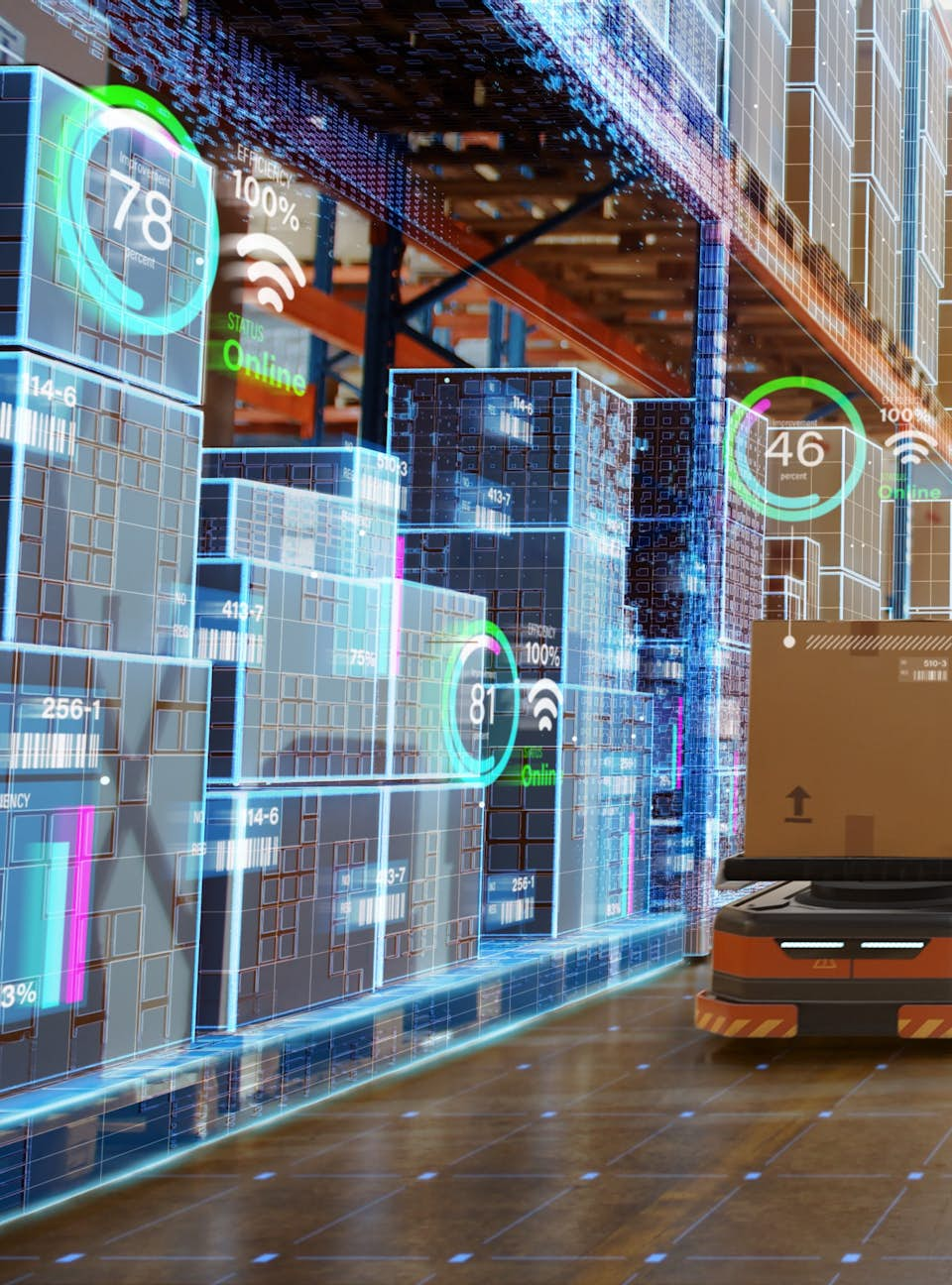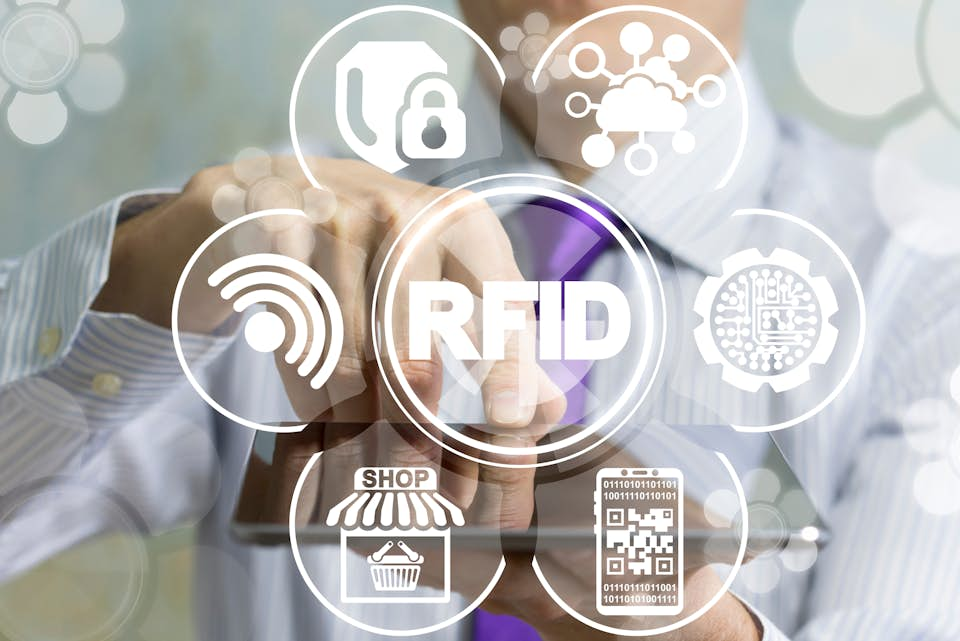Scale your tracking capabilities with active RFID
Active RFID supports growing logistics requirements and complex tracking environments. Learn about our leading active RFID solutions now.
How active RFID tracking works
Active RFID tracking is a technology that uses radio frequency identification (RFID) to collect data to track and locate objects or people in real time or near real time. Unlike passive RFID tags, active RFID tags have their own power source and can transmit signals containing a unique ID and other information to RFID readers. There are two types of active RFID tags – transponders and beacons. Transponders emit a signal only when they receive a signal from a reader, while beacon tags will emit (beacon) a signal at periodic or pre-set intervals. Active tags can have read ranges in the hundreds of meters. The most popular active tags used today operate on license free frequency bands and are compliant with air interface protocols including Bluetooth Low Energy (BLE), LoRa, and Zigbee.
Like passive RFID tracking, active RFID systems are commonly used in the airports and airlines, healthcare, postal and supply chain sectors. They enable the tracking of assets and goods in real time, which can help to optimize processes, reduce inventory loss, improve overall efficiency, and reduce costs. Active RFID tracking has a wide range of applications, from tracking goods in the supply chain to monitoring the location and health status of workers in hazardous environments.

Handle more tracking tasks with active RFID
Active RFID is the preferred choice for long-range asset tracking as its ability to emit a signal means it can be detected from longer distances. Active tags may include sensors that enable the ability to monitor environmental conditions such as light, movement and humidity. These features are often required for tracking highly sensitive items, such as classified documents. Sensor enabled active RFID can track how often a vehicle or container is opened or if enclosed materials have been compromised. Businesses can remotely monitor container access and receive real-time notifications if there are unauthorized attempts to access the items. The technology enables and enhances security to prevent theft or loss of sensitive materials during transit.

Associated technologies further enhance active RFID capabilities
The capabilities of active RFID can be further extended when used in conjunction with other technologies, such as barcodes, passive RFID, Wi-Fi and GPS.
A tracking solution that combines passive RFID and active RFID (BLE technology), for example, gives businesses a more comprehensive understanding of their supply chain operations. It can track the movement of goods from the point of origin to the destination and monitor any handovers that occur in between.
BLE technology can achieve read ranges of up to hundreds of meters, capturing data and sending it back to a handheld device, such as a smartphone. This makes it ideal for tracking items in large vehicles at points along the transit route or when they arrive at a customer base, capturing critical location information at every stage of the supply chain.
Passive RFID technology, on the other hand, is better suited to tracking items in warehouses, airports, hospitals and other places where choke points exist. Choke points are areas where the movement of items can be restricted or controlled, such as doors, gates or conveyors. Passive RFID technology captures data from tags as they pass through these choke points, allowing for real-time tracking and monitoring of items. By combining these technologies, businesses can identify bottlenecks and inefficiencies in their supply chain, enabling them to make informed decisions and improve their operations.
At Lyngsoe Systems, we provide technology agnostic systems, offering a range of solutions that combine different technologies. As our customer, we work closely with you to understand your specific needs and customer flow, enabling us to determine which combination of technologies is most suitable. This provides you with a complete end-to-end solution that allows you to track your assets at every stage of the supply chain, enabling you to optimize your operations, reduce costs and improve customer satisfaction.
Is active or passive RFID the right solution for your tracking needs?
Active and passive RFID technology differs in several aspects, including power source, range and data capture ability.
Active RFID tags have a power source, typically a battery, meaning they can transmit signals over a longer range, which makes them ideal for larger spaces. They can also have additional functionality, including monitoring light, movement and humidity. However, their reliance on batteries means that this type of tag requires regular maintenance and is more expensive than passive RFID tags.
Passive RFID tags are powered by the energy from the RFID reader and do not require a battery. This makes them more cost-effective and sustainable, but they have a limited range. Ultimately, the choice of which type of RFID tag to use depends on the specific requirements of the application.
Keep track of inventory and assets with passive RFID tracking
Passive RFID helps you gain real-time traceability and visibility. Learn more about our passive RFID tracking solutions at Lyngsoe Systems.

Team up with a leading RFID partner
At Lyngsoe Systems, we are proud to be recognised as a leading developer of real-time locating systems (RTLS), using a combination of RFID, BLE, barcode, Wi-Fi, GPS and other technologies to provide end-to-end solutions for any supply chain or specific need.
If you would like to speak to us about how we can support your business and improve your operational processes, get in touch below.
Explore more articles
